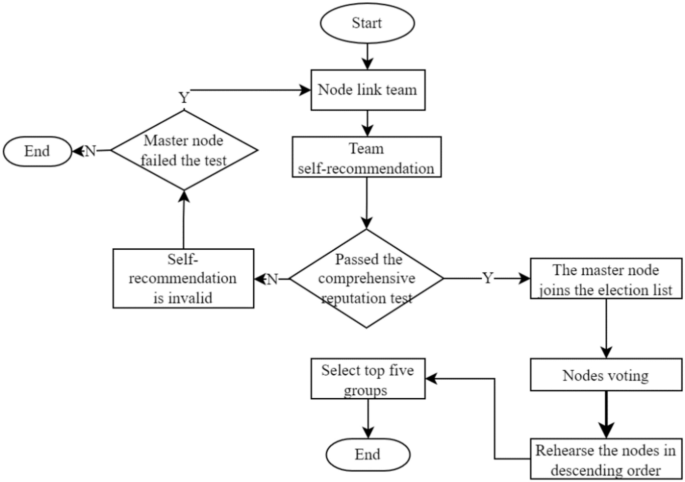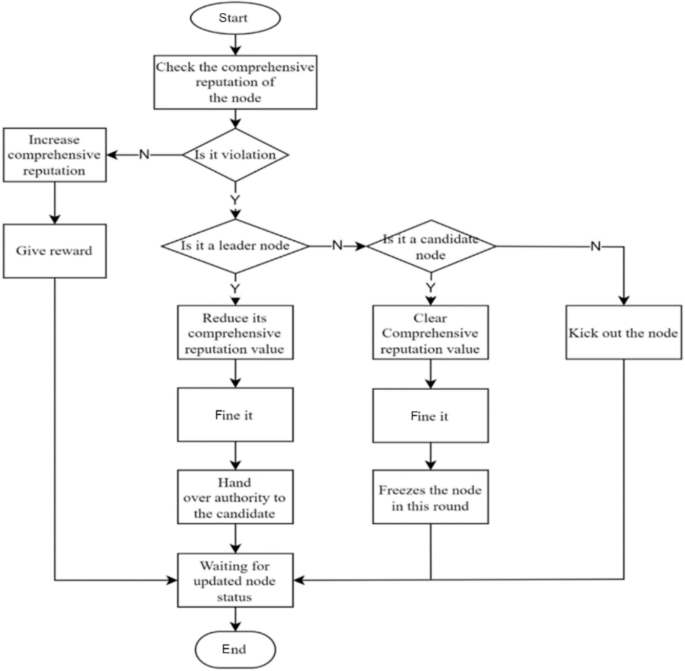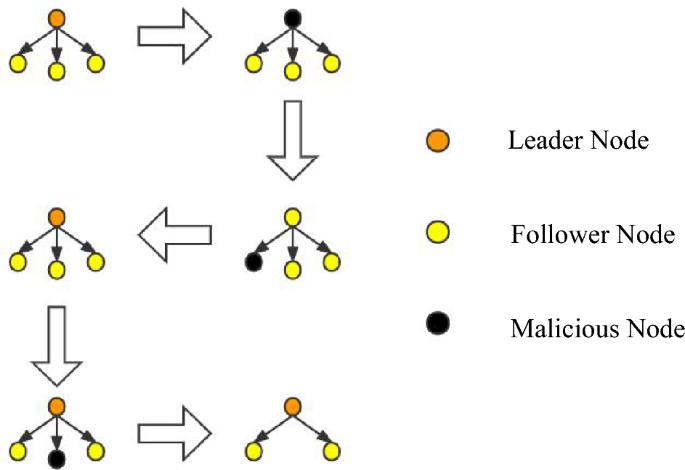News
Empowering Industries Through Blockchain Innovation: A Conversation with Chirag Jetani, Founder of Diamante Blockchain
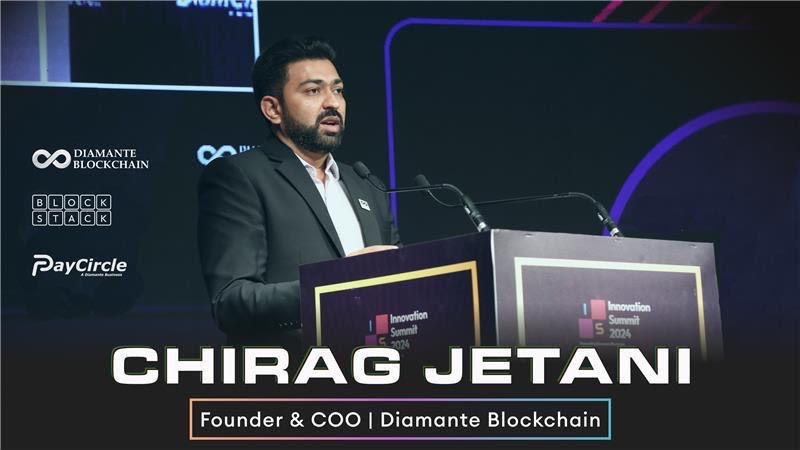
In a world where technological advancements are reshaping industries, blockchain technology emerges as a pivotal force of change. To delve deeper into this revolution, we had the privilege of speaking with Chirag Jetani, the Founder and COO of Diamante Blockchain.
From his initial fascination with digital currencies to co-founding Diamante Blockchain, Jetani offers a glimpse into the company’s formation, groundbreaking solutions, and significant achievements to date. With a strong emphasis on Web 3.0 and the convergence of blockchain and AI, Diamante Blockchain aims to transform sectors such as finance, logistics, payments, trade, healthcare, gaming, and entertainment.
Join us as we explore Diamante’s journey, its unique 4th generation, L1 blockchain network, the dApps built on the proprietary blockchain protocol, Diamante Net, DIAM Coin & its utility, and the strategic alliances fueling Diamante’s international growth and strengthening the dynamic community. Learn how Diamante Blockchain is tackling contemporary challenges with technology and spearheading the movement towards a decentralized, secure, and transparent ecosystem.
Can you provide an overview of Diamante Blockchain and the ecosystem?
We are a blockchain-based company established in 2018 to solve the global challenges in finance, trade, and payments. My co-founder, Dinesh Patel, and I identified several challenges that were not adequately addressed, like high operating costs, slow processes, inefficient operations, and more. So, we decided to introduce blockchain, which could change the game. And yes, it did.
Today, we have developed our layer 1, hybrid blockchain network, Diamante Net, and have also implemented several AI-based scalable solutions that are more transparent, efficient, and secure.
We have extended our ecosystem beyond finance, trade and payments. For instance, we have built several innovative applications, such as CreditCircle, MudraCircle, MetaCircle, ChainX, NodeHRM, and ChainCRM, that are currently in the alpha stage of development. With the most sought-after features and capabilities of our proprietary blockchain protocol, Diamante Net, we have become one of the world’s most safest, fastest, cost-effective, and versatile blockchain networks, building decentralized products and solutions, befitting for both, individuals and businesses, at a time.
On top of our network, we have our native digital asset, DIAM, with a total supply of 10 billion. Our coin offers infinite opportunities to our Diamante community. For instance, users can access the entire Diamante ecosystem; it facilitates seamless transactions—fast, secure, and low-cost; it serves as a network processing fee and also plays an anti-spamming role on our network. Very soon, our DIAM coin will be listed on the leading exchanges.
Can you provide examples of successful industry-specific applications or use cases built on the Diamante Net blockchain?
Oh, yes! The list could start with DiamCircle, DIAM, and PayCircle, followed by CreditCircle, Mintify, Token Tool, DIAM Pay, etc.
We have several successful industry-specific applications developed and, of course, being built on Diamante Net.
DiamCircle is an open source for developers, blockchain enthusiasts, techies, and everyone who wants to build innovative DApps on the foundation of our network, Diamante Net. The platform empowers the community to create innovative solutions and applications that can be used across various industries. We have comprehensive resources available online which can be utilized to develop applications.
Next, we have DIAM. As mentioned already, DIAM can be used for various transactions, including payments, trade and to access our entire ecosystem. It’s also easier to use DIAM across the leading networks. DIAM can be swapped within the Diamante ecosystem and other leading networks like Ethereum (ERC-20), Binance Smart Chain (BEP-20), and TRON. DIAMs can be earned as rewards through our DIAM Wallet and by utilizing our dApps, PayCircle and CreditCircle.
Then comes our flagship product, PayCircle, a super app that enables users to conduct payments, make transactions, and trade digital assets. It supports multiple currencies and is designed for both individuals and businesses, providing a comprehensive solution for their financial, banking and accounting needs.
We also have several other decentralized platforms in the alpha stage of development, including CreditCircle, MetaCircle, Mintify, ChainX, and NodeHRM.
- CreditCircle allows users to take loans against their crypto assets without having to sell them, ensuring they retain ownership and can pay back at minimal interest rates.
- MudraCircle is a CBDC solution for central and commercial banks to manage and issue digital currencies. While MetaCircle offers a virtual banking experience where bank customers can interact with banks in a metaverse environment, get their queries resolved instantly with AI bots and virtual assistants.
- Min-Cli, a command line interface, lets users interact with the Diamante network, simplifying minting, account management and asset transactions.
- ChainX is a crypto exchange platform for fast, secure, and cost-effective digital asset trading.
- NodeHRM and ChainCRM, the former to manage HR tasks and employee management, and the latter to manage business leads and boost customer relationships.
We have a few more platforms launching soon.
- Mintify lets create and manage NFTs with advanced features like customizable and royalty distribution. This is a perfect platform for artists and collectors to monetize their their digital creations.
- Vastra serves farmers and SMEs in the textile industry by eliminating the middlemen and hidden costs in the business process.
- Token Tool facilitates swift creation and distribution of tokens, ensuring seamless integration and compatibility within the ecosystem.
- DIAM Pay offers seamless transactions of native and custom tokens with the Diamante network. Users can easily manage multiple digital assets via one platform.
- Min-cli is another intuitive platform that simplifies minting, account management and asset transactions.
- Share Picc is for content creators and enthusiasts to share content like memes, thoughts, etc. in a decentralized and secured environment.
These platforms demonstrate the versatility and potential of our Diamante Net blockchain in various industries and applications. To learn more about our applications, visit our explorer on the DiamCircle webiste.
How is MetaCircle revolutionizing the banking experiences in the metaverse era?
In the digital age, we all want our banking experiences to be more interesting and easy, like not visiting physical branches yet getting the work done. We want instant responses to our queries, enhanced security, less manual paperwork, and everything to be automated.
This is why we are developing MetaCircle, for a modern way of banking, immersive and intuitive. No more conventional way of banking – users can experience virtual banking with smart solutions in a secure environment. Reduced errors, speedy transactions, AI-driven chatbots and virtual assistants, minimal manual processes, and, above all, it is a feasible solution to the busy generation – fitting well into their busy schedules.
It’s not gonna take long to witness this metaverse-based virtual banking experience. We’ve also conducted a pilot of Metaverse Banking Lounge with two banks in India and the banks have received great applause from their customers. We are in discussions with the banks to set up virtual branches to aid the banking services for the customers.
Explain the purpose and functionality of the PayCircle application and provide insights into the security measures and protocols implemented to ensure secure and efficient transactions.
PayCircle is one of our super apps that provides a number of payments and trade solutions to businesses and individuals. Users can use this app to send, receive and custody multi-currency, fiat and crypto and avail banking, accounting, and other services as well. It also comes with features like split payments, schedule or setup recurring payments. Thus, PayCircle can be the one-stop solution for users’ banking and financial concerns.
It is also one of the safest platforms that you will find in the web3 space right now, as we have implemented some of the most sophisticated and comprehensive security measures and protocols to make sure that the users can avail seamless, secure, and efficient transactions. We use advanced encryption (AES-256) to protect all transaction data during transmission and storage. We have also implemented a multi-factor authentication (MFA) system, which adds multiple layers of protection to provide more security to users.
Apart from this, the platform is packed with secure APIs and communication protocols such as HTTPS and TLS to make sure that the users’ data is safely exchanged among systems. The platform is also AI-enabled, which plays a vital role in monitoring and preventing suspicious activities, providing real-time security. Users will receive personalized AI-curated rewards for every transaction made via PayCircle.
PayCircle also adheres to international regulatory standards like PCI-DSS, along with regular third-party audits to mitigate risks. The platform even complies with data privacy regulations such as GDPR.
Can you explain how the DIAM Wallet simplifies users’ interactions with decentralized applications within the Diamante ecosystem?
Well, the DIAM Wallet is already making waves around the world.
It is a non-custodial crypto wallet that offers the fastest and safest crypto transactions. Firstly, it provides a user-friendly interface for managing various digital assets along with our native digital asset, DIAM. Using DIAM Wallet, users can easily send, receive, and manage different cryptocurrencies, including both ERC-20 and BEP-20 versions of DIAM. Apart from DIAMs, users can also manage any tokens present in the Ethereum, Binance and TRON networks.
With DIAM Wallet, users can enjoy low-cost and fastest transactions at 0.0000024 USD/transaction and 7500 transactions per second. Built on the finest and the most secure Diamante Net, users can rest assured that their digital assets are safe. They have complete control and full ownership of their accounts. DIAM Wallet is available on both the App Store and Play Store—interested folks can download and start using it.
Recently, we have introduced play & earn DIAM games, and more are in the pipeline.
How is Diamante Net leveraging blockchain, gaming, and NFTs to drive innovation in the gaming industry and support the creator economy?
We are leveraging Diamante Net into diverse industries. Let’s say entertainment: we’re working closely with Bollywoodirect, an Indian-based entertainment platform, to develop its ecosystem around the creator economy. Mintify is our other platform that allows users to create and manage NFTs with advanced features like customizable metadata and royalty distribution.
Recently, we have partnered with ABGA, a major gaming alliance focused on Web3 games. The company is supported by prominent institutions in the Web3 industry. Through this collaboration, we aim to strengthen the gaming ecosystem by leveraging the power of Diamante Net and build prominent gaming communities globally.
We are also developing other platforms supporting play-to-earn models, where players can earn cryptocurrency and NFTs by participating in games. These sorts of games not only boost player engagement but also open up new income opportunities for gamers.
More platforms are in the development stage, facilitating decentralized marketplaces for buying, selling, and trading digital assets. These platforms empower gamers and creators to operate in a free market without relying on centralized intermediaries.
How does Diamante Net differentiate itself from other global blockchain networks, and what unique advantages does it offer users and businesses?
Diamante Net stands out as a leader in offering 4th generation, layer-1 hybrid blockchain-based solutions. Our proprietary blockchain protocol is designed for high-speed, enhanced security and versatility, enabling secure and low-cost transactions. This sets us apart from other networks.
Our ecosystem is powered by DIAM, our native digital asset that supports a wide range of use cases, from digital payments and tokenization to supply chain management and various applications already built on our network. This versatility allows us to cater to diverse industries, including healthcare, insurance, banking, trade, and travel, addressing their critical challenges around scalability, interoperability, and security.
Diamante Net also supports advanced features like Real World Assets (RWA), Decentralized Physical Infrastructure Networks (DePIN), gaming, the creator economy, and layer-2 solutions, making it a powerful and versatile platform. Our commitment to sustainability and innovation ensures that our solutions are not only technologically advanced but also contribute positively to the broader ecosystem.
Importantly, Diamante Net has a high-performance, scalable, and secure architecture that supports cross-chain compatibility. Thanks to the Federate Byzantine Agreement (FBA) consensus mechanism, it can handle 10 million daily transactions with impressive speed and low latency. The integration of diverse interoperability solutions, such as the Sync Bridge and Binance Greenfield Chain, further sets us apart.
Our user-friendly interfaces and robust developer tools differentiate us from other blockchain networks, making it easier for users and developers to interact with our platform. We’ve also strengthened collaborations with tech partners, including Hyperledger Fabric community solutions for Diamante Net integration.
These capabilities combined make Diamante Net a compelling choice for businesses and individuals seeking cutting-edge blockchain solutions.
What are the groundbreaking innovations, strategic collaborations, and future developments underway in the Diamante Blockchain ecosystem, and how will they transform various industries and sectors?
One of the most significant milestones for us was establishing a strategic partnership with the Private Office of Highness Sheikh Mohamed Bin Ahmed Bin Hamdan Al Nahyan, the Royal Family of Abu Dhabi. This partnership aims to expand our ecosystem to the Middle East and build population-scale solutions with blockchain and AI technologies. It’s a game-changer for fostering a startup ecosystem and promoting cultural exchange between India and the MENA regions.
We’re also thrilled to announce that our native digital asset, DIAM, is ready to be listed on all leading exchanges. This is a major step forward for our 1million+ strong growing community and the world. We’re hosting global hackathons and alliances to boost engagement with our community and developer engagement with Diamante Net.
We’re constantly expanding our operations into new geographies, attending major global events in Vietnam, the Middle East, Japan, Korea, South America and the USA in the coming months and are already exploring potential business synergies there. We’re excited to forge new partnerships and collaborate with key stakeholders in this dynamic space.
News
An enhanced consensus algorithm for blockchain
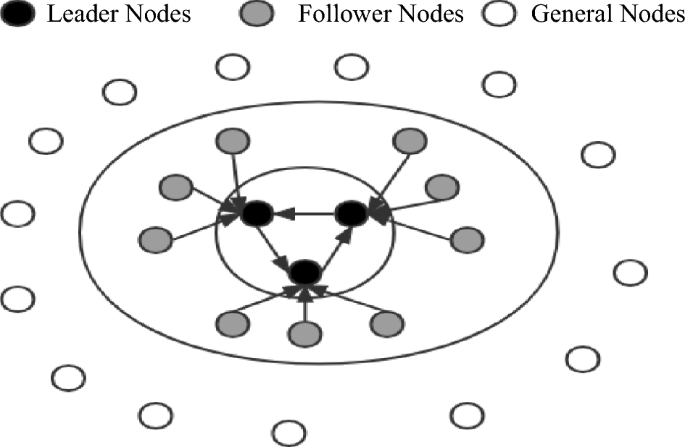
The introduction of the link and reputation evaluation concepts aims to improve the stability and security of the consensus mechanism, decrease the likelihood of malicious nodes joining the consensus, and increase the reliability of the selected consensus nodes.
The link model structure based on joint action
Through the LINK between nodes, all the LINK nodes engage in consistent activities during the operation of the consensus mechanism. The reputation evaluation mechanism evaluates the trustworthiness of nodes based on their historical activity status throughout the entire blockchain. The essence of LINK is to drive inactive nodes to participate in system activities through active nodes. During the stage of selecting leader nodes, nodes are selected through self-recommendation, and the reputation evaluation of candidate nodes and their LINK nodes must be qualified. The top 5 nodes of the total nodes are elected as leader nodes through voting, and the nodes in their LINK status are candidate nodes. In the event that the leader node goes down, the responsibility of the leader node is transferred to the nodes in its LINK through the view-change. The LINK connection algorithm used in this study is shown in Table 2, where LINKm is the linked group and LINKP is the percentage of linked nodes.
Table 2 LINK connection algorithm.
Node type
This paper presents a classification of nodes in a blockchain system based on their functionalities. The nodes are divided into three categories: leader nodes (LNs), follower nodes (FNs), and general nodes (Ns). The leader nodes (LNs) are responsible for producing blocks and are elected through voting by general nodes. The follower nodes (FNs) are nodes that are linked to leader nodes (LNs) through the LINK mechanism and are responsible for validating blocks. General nodes (N) have the ability to broadcast and disseminate information, participate in elections, and vote. The primary purpose of the LINK mechanism is to act in combination. When nodes are in the LINK, there is a distinction between the master and slave nodes, and there is a limit to the number of nodes in the LINK group (NP = {n1, nf1, nf2 ……,nfn}). As the largest proportion of nodes in the system, general nodes (N) have the right to vote and be elected. In contrast, leader nodes (LNs) and follower nodes (FNs) do not possess this right. This rule reduces the likelihood of a single node dominating the block. When the system needs to change its fundamental settings due to an increase in the number of nodes or transaction volume, a specific number of current leader nodes and candidate nodes need to vote for a reset. Subsequently, general nodes need to vote to confirm this. When both confirmations are successful, the new basic settings are used in the next cycle of the system process. This dual confirmation setting ensures the fairness of the blockchain to a considerable extent. It also ensures that the majority holds the ultimate decision-making power, thereby avoiding the phenomenon of a small number of nodes completely controlling the system.
After the completion of a governance cycle, the blockchain network will conduct a fresh election for the leader and follower nodes. As only general nodes possess the privilege to participate in the election process, the previous consortium of leader and follower nodes will lose their authorization. In the current cycle, they will solely retain broadcasting and receiving permissions for block information, while their corresponding incentives will also decrease. A diagram illustrating the node status can be found in Fig. 1.
Election method
The election method adopts the node self-nomination mode. If a node wants to participate in an election, it must form a node group with one master and three slaves. One master node group and three slave node groups are inferred based on experience in this paper; these groups can balance efficiency and security and are suitable for other project collaborations. The successfully elected node joins the leader node set, and its slave nodes enter the follower node set. Considering the network situation, the maximum threshold for producing a block is set to 1 s. If the block fails to be successfully generated within the specified time, it is regarded as a disconnected state, and its reputation score is deducted. The node is skipped, and in severe cases, a view transformation is performed, switching from the master node to the slave node and inheriting its leader’s rights in the next round of block generation. Although the nodes that become leaders are high-reputation nodes, they still have the possibility of misconduct. If a node engages in misconduct, its activity will be immediately stopped, its comprehensive reputation score will be lowered, it will be disqualified from participating in the next election, and its equity will be reduced by 30%. The election process is shown in Fig. 2.
Incentives and penalties
To balance the rewards between leader nodes and ordinary nodes and prevent a large income gap, two incentive/penalty methods will be employed. First, as the number of network nodes and transaction volume increase, more active nodes with significant stakes emerge. After a prolonged period of running the blockchain, there will inevitably be significant class distinctions, and ordinary nodes will not be able to win in the election without special circumstances. To address this issue, this paper proposes that rewards be reduced for nodes with stakes exceeding a certain threshold, with the reduction rate increasing linearly until it reaches zero. Second, in the event that a leader or follower node violates the consensus process, such as by producing a block out of order or being unresponsive for an extended period, penalties will be imposed. The violation handling process is illustrated in Fig. 3.
Violation handling process.
Comprehensive reputation evaluation and election mechanism based on historical transactions
This paper reveals that the core of the DPoS consensus mechanism is the election process. If a blockchain is to run stably for a long time, it is essential to consider a reasonable election method. This paper proposes a comprehensive reputation evaluation election mechanism based on historical records. The mechanism considers the performance indicators of nodes in three dimensions: production rate, tokens, and validity. Additionally, their historical records are considered, particularly whether or not the nodes have engaged in malicious behavior. For example, nodes that have ever been malicious will receive low scores during the election process unless their overall quality is exceptionally high and they have considerable support from other nodes. Only in this case can such a node be eligible for election or become a leader node. The comprehensive reputation score is the node’s self-evaluation score, and the committee size does not affect the computational complexity.
Moreover, the comprehensive reputation evaluation proposed in this paper not only is a threshold required for node election but also converts the evaluation into corresponding votes based on the number of voters. Therefore, the election is related not only to the benefits obtained by the node but also to its comprehensive evaluation and the number of voters. If two nodes receive the same vote, the node with a higher comprehensive reputation is given priority in the ranking. For example, in an election where node A and node B each receive 1000 votes, node A’s number of stake votes is 800, its comprehensive reputation score is 50, and only four nodes vote for it. Node B’s number of stake votes is 600, its comprehensive reputation score is 80, and it receives votes from five nodes. In this situation, if only one leader node position remains, B will be selected as the leader node. Displayed in descending order of priority as comprehensive credit rating, number of voters, and stake votes, this approach aims to solve the problem of node misconduct at its root by democratizing the process and subjecting leader nodes to constraints, thereby safeguarding the fundamental interests of the vast majority of nodes.
Comprehensive reputation evaluation
This paper argues that the election process of the DPoS consensus mechanism is too simplistic, as it considers only the number of election votes that a node receives. This approach fails to comprehensively reflect the node’s actual capabilities and does not consider the voters’ election preferences. As a result, nodes with a significant stake often win and become leader nodes. To address this issue, the comprehensive reputation evaluation score is normalized considering various attributes of the nodes. The scoring results are shown in Table 3.
Table 3 Comprehensive reputation evaluation.
Since some of the evaluation indicators in Table 3 are continuous while others are discrete, different normalization methods need to be employed to obtain corresponding scores for different indicators. The continuous indicators include the number of transactions/people, wealth balance, network latency, network jitter, and network bandwidth, while the discrete indicators include the number of violations, the number of successful elections, and the number of votes. The value range of the indicator “number of transactions/people” is (0,1), and the value range of the other indicators is (0, + ∞). The equation for calculating the “number of transactions/people” is set as shown in Eq. (1).
$$A_{1} = \left\{ {\begin{array}{*{20}l} {0,} \hfill & {{\text{G}} = 0} \hfill \\ {\frac{{\text{N}}}{{\text{G}}}*10,} \hfill & {{\text{G}} > 0} \hfill \\ \end{array} } \right.$$
(1)
where N represents the number of transactional nodes and G represents the number of transactions. It reflects the degree of connection between the node and other nodes. Generally, nodes that transact with many others are safer than those with a large number of transactions with only a few nodes. The limit value of each item, denoted by x, is determined based on the situation and falls within the specified range, as shown in Eq. (2). The wealth balance and network bandwidth indicators use the same function to set their respective values.
$${A}_{i}=20*\left(\frac{1}{1+{e}^{-{a}_{i}x}}-0.5\right)$$
(2)
where x indicates the value of this item and expresses the limit value.
In Eq. (3), x represents the limited value of this indicator. The lower the network latency and network jitter are, the higher the score will be.
The last indicators, which are the number of violations, the number of elections, and the number of votes, are discrete values and are assigned different scores according to their respective ranges. The scores corresponding to each count are shown in Table 4.
$$A_{3} = \left\{ {\begin{array}{*{20}l} {10*\cos \frac{\pi }{200}x,} \hfill & {0 \le x \le 100} \hfill \\ {0,} \hfill & {x > 100} \hfill \\ \end{array} } \right.$$
(3)
Table 4 Score conversion.
The reputation evaluation mechanism proposed in this paper comprehensively considers three aspects of nodes, wealth level, node performance, and stability, to calculate their scores. Moreover, the scores obtain the present data based on historical records. Each node is set as an M × N dimensional matrix, where M represents M times the reputation evaluation score and N represents N dimensions of reputation evaluation (M < = N), as shown in Eq. (4).
$${\text{N}} = \left( {\begin{array}{*{20}c} {a_{11} } & \cdots & {a_{1n} } \\ \vdots & \ddots & \vdots \\ {a_{m1} } & \cdots & {a_{mn} } \\ \end{array} } \right)$$
(4)
The comprehensive reputation rating is a combined concept related to three dimensions. The rating is set after rating each aspect of the node. The weight w and the matrix l are not fixed. They are also transformed into matrix states as the position of the node in the system changes. The result of the rating is set as the output using Eq. (5).
$$\text{T}=\text{lN}{w}^{T}=\left({l}_{1}\dots {\text{l}}_{\text{m}}\right)\left(\begin{array}{ccc}{a}_{11}& \cdots & {a}_{1n}\\ \vdots & \ddots & \vdots \\ {a}_{m1}& \cdots & {a}_{mn}\end{array}\right){\left({w}_{1}\dots {w}_{n}\right)}^{T}$$
(5)
Here, T represents the comprehensive reputation score, and l and w represent the correlation coefficient. Because l is a matrix of order 1*M, M is the number of times in historical records, and M < = N is set, the number of dimensions of l is uncertain. Set the term l above to add up to 1, which is l1 + l2 + …… + ln = 1; w is also a one-dimensional matrix whose dimension is N*1, and its purpose is to act as a weight; within a certain period of time, w is a fixed matrix, and w will not change until the system changes the basic settings.
Assume that a node conducts its first comprehensive reputation rating, with no previous transaction volume, violations, elections or vote. The initial wealth of the node is 10, the latency is 50 ms, the jitter is 100 ms, and the network bandwidth is 100 M. According to the equation, the node’s comprehensive reputation rating is 41.55. This score is relatively good at the beginning and gradually increases as the patient participates in system activities continuously.
Voting calculation method
To ensure the security and stability of the blockchain system, this paper combines the comprehensive reputation score with voting and randomly sorts the blocks, as shown in Eqs. (3–6).
$$Z=\sum_{i=1}^{n}{X}_{i}+nT$$
(6)
where Z represents the final election score, Xi represents the voting rights earned by the node, n is the number of nodes that vote for this node, and T is the comprehensive reputation score.
The voting process is divided into stake votes and reputation votes. The more reputation scores and voters there are, the more total votes that are obtained. In the early stages of blockchain operation, nodes have relatively few stakes, so the impact of reputation votes is greater than that of equity votes. This is aimed at selecting the most suitable node as the leader node in the early stage. As an operation progresses, the role of equity votes becomes increasingly important, and corresponding mechanisms need to be established to regulate it. The election vote algorithm used in this paper is shown in Table 5.
Table 5 Election vote counting algorithm.
This paper argues that the election process utilized by the original DPoS consensus mechanism is overly simplistic, as it relies solely on the vote count to select the node that will oversee the entire blockchain. This approach cannot ensure the security and stability of the voting process, and if a malicious node behaves improperly during an election, it can pose a significant threat to the stability and security of the system as well as the safety of other nodes’ assets. Therefore, this paper proposes a different approach to the election process of the DPoS consensus mechanism by increasing the complexity of the process. We set up a threshold and optimized the vote-counting process to enhance the security and stability of the election. The specific performance of the proposed method was verified through experiments.
The election cycle in this paper can be customized, but it requires the agreement of the blockchain committee and general nodes. The election cycle includes four steps: node self-recommendation, calculating the comprehensive reputation score, voting, and replacing the new leader. Election is conducted only among general nodes without affecting the production or verification processes of leader nodes or follower nodes. Nodes start voting for preferred nodes. If they have no preference, they can use the LINK mechanism to collaborate with other nodes and gain additional rewards.
View changes
During the consensus process, conducting a large number of updates is not in line with the system’s interests, as the leader node (LN) and follower node (FN) on each node have already been established. Therefore, it is crucial to handle problematic nodes accurately when issues arise with either the LN or FN. For instance, when a node fails to perform its duties for an extended period or frequently fails to produce or verify blocks within the specified time range due to latency, the system will precisely handle them. For leader nodes, if they engage in malicious behavior such as producing blocks out of order, the behavior is recorded, and their identity as a leader node is downgraded to a follower node. The follower node inherits the leader node’s position, and the nature of their work is transformed as they swap their responsibilities of producing and verifying blocks with their original work. This type of behavior will not significantly affect the operation of the blockchain system. Instead of waiting until the end of the current committee round to punish malicious nodes, dynamic punishment is imposed on the nodes that affect the operation of the blockchain system to maintain system security. The view change operation is illustrated in Fig. 4.
In traditional PBFT, view changes are performed according to the view change protocol by changing the view number V to the next view number V + 1. During this process, nodes only receive view change messages and no other messages from other nodes. In this paper, the leader node group (LN) and follower node group (FN) are selected through an election of the LINK group. The node with LINKi[0] is added to the LN leader node group, while the other three LINK groups’ follower nodes join the FN follower node group since it is a configuration pattern of one master and three slaves. The view change in this paper requires only rearranging the node order within the LINK group to easily remove malicious nodes. Afterward, the change is broadcast to other committee nodes, and during the view transition, the LINK group does not receive block production or verification commands from the committee for stability reasons until the transition is completed.
News
The Hype Around Blockchain Mortgage Has Died Down, But This CEO Still Believes

LiquidFi Founder Ian Ferreira Sees Huge Potential in Blockchain Despite Hype around technology is dead.
“Blockchain technology has been a buzzword for a long time, and it shouldn’t be,” Ferriera said. “It should be a technology that lives in the background, but it makes everything much more efficient, much more transparent, and ultimately it saves costs for everyone. That’s the goal.”
Before founding his firm, Ferriera was a portfolio manager at a hedge fund, a job that ended up revealing “interesting intricacies” related to the mortgage industry.
Being a mortgage trader opened Ferriera’s eyes to a lot of the operational and infrastructure problems that needed to be solved in the mortgage-backed securities industry, he said. That later led to the birth of LiquidFi.
“The point of what we do is to get raw data attached to a resource [a loan] on a blockchain so that it’s provable. You reduce that trust problem because you have the data, you have the document associated with that data,” said the LiquidFi CEO.
Ferriera spoke with National Mortgage News about the value of blockchain technology, why blockchain hype has fizzled out, and why it shouldn’t.
News
New bill pushes Department of Veterans Affairs to examine how blockchain can improve its work

The Department of Veterans Affairs would have to evaluate how blockchain technology could be used to improve benefits and services offered to veterans, according to a legislative proposal introduced Tuesday.
The bill, sponsored by Rep. Nancy Mace, R-S.C., would direct the VA to “conduct a comprehensive study of the feasibility, potential benefits, and risks associated with using distributed ledger technology in various programs and services.”
Distributed ledger technology, including blockchain, is used to protect and track information by storing data across multiple computers and keeping a record of its use.
According to the text of the legislation, which Mace’s office shared exclusively with Nextgov/FCW ahead of its publication, blockchain “could significantly improve benefits allocation, insurance program management, and recordkeeping within the Department of Veterans Affairs.”
“We need to bring the federal government into the 21st century,” Mace said in a statement. “This bill will open the door to research on improving outdated systems that fail our veterans because we owe it to them to use every tool at our disposal to improve their lives.”
Within one year of the law taking effect, the Department of Veterans Affairs will be required to submit a report to the House and Senate Veterans Affairs committees detailing its findings, as well as the benefits and risks identified in using the technology.
The mandatory review is expected to include information on how the department’s use of blockchain could improve the way benefits decisions are administered, improve the management and security of veterans’ personal data, streamline the insurance claims process, and “increase transparency and accountability in service delivery.”
The Department of Veterans Affairs has been studying the potential benefits of using distributed ledger technology, with the department emission a request for information in November 2021 seeking input from contractors on how blockchain could be leveraged, in part, to streamline its supply chains and “secure data sharing between institutions.”
The VA’s National Institute of Artificial Intelligence has also valued the use of blockchain, with three of the use cases tested during the 2021 AI tech sprint focused on examining its capabilities.
Mace previously introduced a May bill that would direct Customs and Border Protection to create a public blockchain platform to store and share data collected at U.S. borders.
Lawmakers also proposed additional measures that would push the Department of Veterans Affairs to consider adopting other modernized technologies to improve veteran services.
Rep. David Valadao, R-Calif., introduced legislation in June that would have directed the department to report to lawmakers on how it plans to expand the use of “certain automation tools” to process veterans’ claims. The House of Representatives Subcommittee on Disability Assistance and Memorial Affairs gave a favorable hearing on the congressman’s bill during a Markup of July 23.
News
California DMV Uses Blockchain to Fight Auto Title Fraud

TDR’s Three Takeaways: California DMV Uses Blockchain to Fight Fraud
- California DMV uses blockchain technology to manage 42 million auto titles.
- The initiative aims to improve safety and reduce car title fraud.
- The immutable nature of blockchain ensures accurate and tamper-proof records.
The California Department of Motor Vehicles (DMV) is implementing blockchain technology to manage and secure 42 million auto titles. This innovative move aims to address and reduce the persistent problem of auto title fraud, a problem that costs consumers and the industry millions of dollars each year. By moving to a blockchain-based system, the DMV is taking advantage of the technology’s key feature: immutability.
Blockchain, a decentralized ledger technology, ensures that once a car title is registered, it cannot be altered or tampered with. This creates a highly secure and transparent system, significantly reducing the risk of fraudulent activity. Every transaction and update made to a car title is permanently recorded on the blockchain, providing a complete and immutable history of the vehicle’s ownership and status.
As first reported by Reuters, the DMV’s adoption of blockchain isn’t just about preventing fraud. It’s also aimed at streamlining the auto title process, making it more efficient and intuitive. Traditional auto title processing involves a lot of paperwork and manual verification, which can be time-consuming and prone to human error. Blockchain technology automates and digitizes this process, reducing the need for physical documents and minimizing the chances of errors.
Additionally, blockchain enables faster verification and transfer of car titles. For example, when a car is sold, the transfer of ownership can be done almost instantly on the blockchain, compared to days or even weeks in the conventional system. This speed and efficiency can benefit both the DMV and the vehicle owners.
The California DMV’s move is part of a broader trend of government agencies exploring blockchain technology to improve their services. By adopting this technology, the DMV is setting a precedent for other states and industries to follow, showcasing blockchain’s potential to improve safety and efficiency in public services.
-
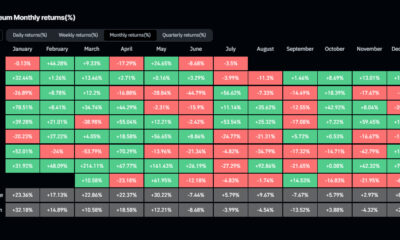
 Ethereum12 months ago
Ethereum12 months agoEthereum Posts First Consecutive Monthly Losses Since August 2023 on New ETFs
-
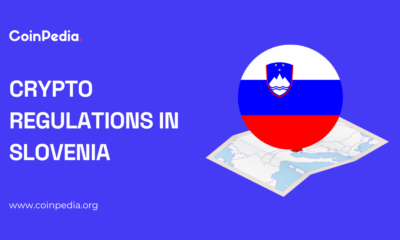
 Regulation12 months ago
Regulation12 months agoCryptocurrency Regulation in Slovenia 2024
-

 News12 months ago
News12 months agoNew bill pushes Department of Veterans Affairs to examine how blockchain can improve its work
-

 Regulation12 months ago
Regulation12 months agoThink You Own Your Crypto? New UK Law Would Ensure It – DL News
-

 Regulation12 months ago
Regulation12 months agoUpbit, Coinone, Bithumb Face New Fees Under South Korea’s Cryptocurrency Law
-

 Regulation12 months ago
Regulation12 months agoA Blank Slate for Cryptocurrencies: Kamala Harris’ Regulatory Opportunity
-
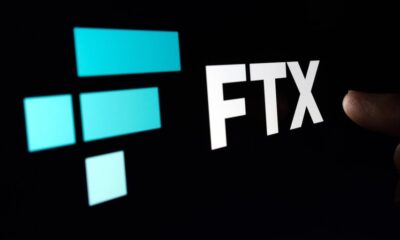
 Regulation12 months ago
Regulation12 months agoBahamas Passes Cryptocurrency Bill Designed to Prevent FTX, Terra Disasters
-

 Regulation12 months ago
Regulation12 months agoIndia to Follow G20 Policy for Cryptocurrency Regulation: MoS Finance
-

 News1 year ago
News1 year ago“Captain Tsubasa – RIVALS” launches on Oasys Blockchain
-

 Ethereum1 year ago
Ethereum1 year agoComment deux frères auraient dérobé 25 millions de dollars lors d’un braquage d’Ethereum de 12 secondes • The Register
-

 News12 months ago
News12 months agoEU supports 15 startups to fight online disinformation with blockchain
-

 News1 year ago
News1 year agoSolana ranks the fastest blockchain in the world, surpassing Ethereum, Polygon ⋆ ZyCrypto





